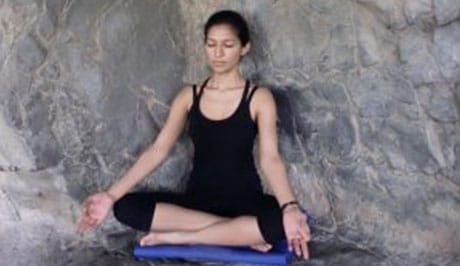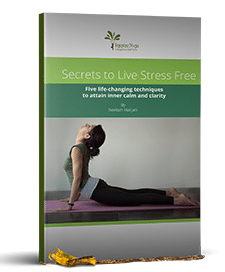Often in a crowded class we look around to see how far we should be stretching by comparing our pose with the person next to us. It is crucial that during a yoga class your complete attention should remain within your mat, develop awareness towards your own body and its boundaries. Respect your body to ensure your yoga practice does not cause any damage to your muscles, joints or ligaments from excessive stretching.
1. Pain in the best indicator of something going wrong
This is a primal mechanism that you should not ignore. There is a clear difference between a gentle pull on the back of your legs during your first forward bend and the pain from a pulled ligament if you were to prematurely force your head to your knees in a forward bend. If you feel any sharp pain- STOP! Slowly come out of the pose and alert your teacher.
2. Stay in control
Be sure to maintain the pose and be able to slowly move into another pose. Don’t jerk from one pose to another, even if you are flowing with your breath be sure your muscles are engaged at all times and are controlling the movements- don’t let momentum swing you in and out of a posture. Most cases of injury during a yoga class happen during the transitions into postures rather than holding the posture.
3. Locate the discomfort
If you are feeling uncomfortable in the pose, try to find out why and where this is stemming from. Is it from a tight muscle or from the centre of a joint? If the pain is coming from an injury prone area such as your hips, ankles, knees, shoulders or spinal column gently come out of the pose and ask your teacher to give you a more supported variation of the pose to take the weight off the sensitive area.
4. Check your alignment
There is often an uneven distribution of weight that causes your joints to feel strain. Check the base of your pose, for example, the position of your hands and feet. Make sure your foundation is firm, your arms and legs are active to ensure that no excessive pressure is held around your wrists and ankles. Follow the exact form of the posture- if you are unsure about the alignment feel free to ask, the clarification will probably benefit others in the class too!
5. Notice your breath
If you feel discomfort from overstretching in a pose there is a tendency of holding your breath as your body comes into a panic mode. It is essential to always check your breathing pattern. Take slow even breaths to gradually relax into the pose and allow your muscles to lengthen. By holding your breath your muscles tense up putting a lot of pressure on tendons and ligaments.
Flexibility can be improved more quickly and retained longer than any other aspect of physical fitness. As you hold each stretch you will gradually impart increasing flexibility to your muscles, joints and spine- regardless of your age or current physical condition. Once achieved, you will find that you can retain this wonderfully flexible state for your entire lifetime.
Intently listen to your body to feel comfortable during the practice. By using your own discretion you can easily eradicate sources of injury and enjoy all the benefits from your sessions of yoga. The relationship you have with your yoga teacher is also very important, you must be in a trusting environment where your teacher knows your boundaries and facilitates your postures to attain optimal stretching.

